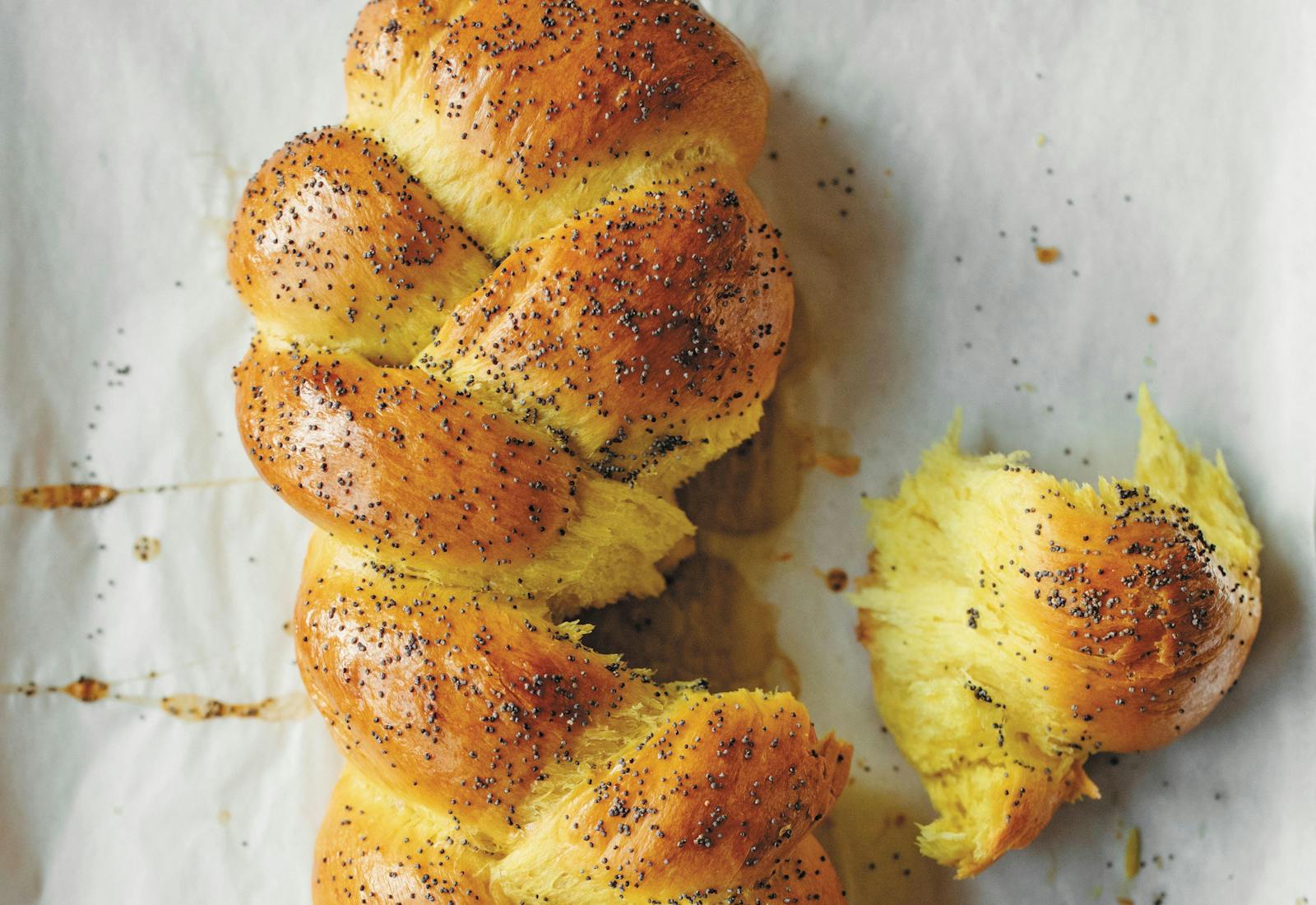Shared by Molly Yeh


“Bernie’s artistic medium of choice is egg wash on challah dough, and I take full responsibility for and pride in this,” food TV star Molly Yeh writes of her eldest daughter in her cookbook “Home Is Where the Eggs Are.” It’s fitting. When Molly was little, challah was “all I would eat on any holiday because I was so picky,” she says. “I wouldn't even eat the crust.”
It’s also the recipe she reached for when she needed to feel at home living in her first apartment on Manhattan’s Upper West Side. “I made a huge mess and it took all day, but it was well worth it. My roommate thought I was some kind of magician,” she adds.
Since then, Molly’s baked countless loaves and the recipe she turns to again and again is this potato challah, which she started making as a way to use up potatoes from her garden. “Mashed potatoes, it turns out, take an already super-soft bread to mega fluffy cloud status,” she writes in her book, but over the years, she realized potato flour works just as well — in half the time.
It’s an incredibly versatile recipe. Molly uses it to make sandwich bread, wraps it around hot dogs for pigs in a blanket, and laces it with halva for Rosh Hashanah. Friday evenings in her home are reserved for pizza night and sometimes she uses the dough for little pizzette topped with mozzarella, tomatoes, olives, and crushed red pepper. As she notes: “the options are endless.”
In a large bowl or the bowl of a stand mixer, whisk together the flours, sugar, yeast, salt, and turmeric and pepper, if using. In a medium bowl or large measuring cup, whisk together the water, eggs and oil. Add the wet ingredients to the dry ingredients and use a stiff rubber spatula or wooden spoon to mostly combine into a shaggy dough. It may seem dry at first, but it will come together as you knead it. Knead, either on a work surface or with the stand mixer fitted with a dough hook on medium, adding more flour if the dough is too sticky to work with, until the dough is smooth and slightly sticky, 10 to 15 minutes.
Stretch the dough into a ball, pinching the ends under to form a taut surface, and transfer to an oiled bowl (or simply oil the bowl you used to mix the dough if it isn’t too covered in dough), turning to coat the dough fully in a thin layer of oil. Cover with plastic wrap or a towel and let rise in a draft-free place until doubled in size, 1 to 2 hours.
Preheat the oven to 375°F and line 2 sheet pans with parchment paper (for braided loaves) or grease a 4 x 13-inch pullman loaf pan with a cover and set aside.
If braiding loaves, turn the dough out onto a clean surface and divide it in half. Divide each half into 3 equal pieces and roll each into a log that is tapered at the ends. Braid 3 logs together, pinching the ends so they adhere, and transfer the loaf to a prepared sheet pan. Repeat to make a second braided loaf. Cover loosely with plastic wrap or towels and let rise in a draft-free place until puffy and risen by half, 30 to 45 minutes.
If making a pullman loaf, stretch the dough into a fat cylinder and place it in the pan. Grease the cover and slide it on. Let rise in a draft-free place until puffy and risen by half, 30 to 45 minutes.
Brush the braided loaves with a thin layer of egg wash and sprinkle with your toppings of choice (omit the egg wash and toppings on a pullman loaf). Bake until golden brown with an internal temperature of 190°F; begin checking for doneness at 18 minutes for braided loaves and 30 minutes for a pullman loaf. When baking braided loaves, switch racks and rotate 180 degrees about halfway through the baking time. Let cool slightly and tear into it because nothing is better than hot (buttered) challah.
Leftovers, stored in an airtight container at room temperature, are best eaten within a couple of days and then after that make French toast. They can also be sliced and frozen in an airtight container for up to a few months. Reheat in a toaster or skillet.
Recipe excerpted from Home Is Where the Eggs Are by Molly Yeh (William Morrow Cookbooks).